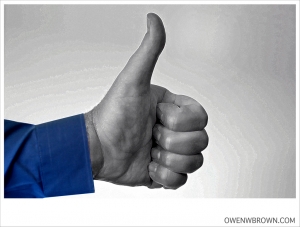5 Things Nonprofits Need to Know About Facebook Before 2014
As September draws to a close, it’s a good time to recap what was a busy summer of news, updates and changes out of Facebook. Social marketers and fundraisers will need to understand what it takes to get the highest engagement and the best results out of their Facebook posts, especially as they pursue end-of-year appeals. Let’s dig right in.
 1. EdgeRank is Dead. Long live EdgeRank!
1. EdgeRank is Dead. Long live EdgeRank!
Have you ever wondered you see some updates from friends and brands, but not others? It all has to do with EdgeRank, an invisible score attributed to all users and pages. The higher your EdgeRank, the more likely it is that users see your updates.
In August, Facebook announced that EdgeRank had been replaced by a new algorithm. The new “News Feed algorithm” operates in a similar manner as EdgeRank, with “100,000 individual weights” dictating what is seen and not seen. Principal within the algorithm are two factors: Story Bumping and Last Actor.
Story Bumping means that users will not only see new updates, but also older updates that are new to that specific user.
Last Actor tracks the last 50 interactions a user makes on Facebook and uses those as signals to rank content in their feed.
So what does that mean for you? Essentially, things just got harder for nonprofits who are competing against for-profit brands. The algorithm is more complicated and sophisticated than ever. To rise above the noise, you’ll need to offer the most relevant and engaging content.
2. You Can Now Run a Contest Without a Third-Party App
Contests on Facebook via brand pages have long been a point of frustration for social marketers. An unusually strict guideline prohibited administrators from using a “like” as a way of entering a contestwithout using a third-party app, which typically charge a fee. Most brand pages broke this rule anyway, with a few getting shut down for their transgression.
In August, Facebook lifted this guideline. This means that if you want to give away tickets to a fundraising gala on Facebook, you can use a “like” as an entry fee. This is a great way to drive new page likes and post visibility (generally, the more “likes” a post has, the more likely it is to show up in a user’s news feed). Consider obtaining an underwriter-donated item that can be given away in a contest.
3. Hashtags Don’t Do Much
On June 12th, 2013 Facebook released support for hashtags, a feature most associated with Twitter. Hashtags allow you to place a # symbol in front of a word or phrase in order to categorize a Tweet or Facebook update. Users can click the hashtag to see what others are saying about that topic.
If you’ve felt bad about not using hashtags or thought you might be missing out, fret no more. Analytics firm Simply Measured reports that “hashtags are not resulting in any additional engagement.” If you did create an original hashtag for your recent fundraising campaign or event, you might just ditch it.
4. Don’t Sleep on Weekends
The best date and time to post to Facebook is as elusive as it is hotly debated.
Buddy Media reports that most updates occur on weekdays, with the most engagement recorded on Thursday and Friday. This means that if you post early on during the week, you might be competing for eyeballs and missing out on engagement.
Dan Zarrella of HubSpot contends that Saturdays are the best day, with Noon being the best time of day.
Your results may vary, of course, based on your individual community of followers – but if you’ve been ignoring the later half of the week and weekends, why not give it a try? Your donors might be more active then.
Regardless of when you post, it’s been reported that the average life-span of an update is only 5 hours, so you better make an impression quick!
5. Mobile Is King
If you post something on Facebook, it’s likely going to be seen on a mobile device.
In April, Flurry Analytics reported that American smartphone users spend 18% of their time spent on smartphones on Facebook. Facebook itself has reported that their global mobile daily active user count increased 10.3% from 425 million to 469 million from Q1 to Q2 2013. In June 2013 alone, Facebook boasted 819 million total monthly active mobile users, up 51 percent over last year.
Tidak ada komentar:
Posting Komentar